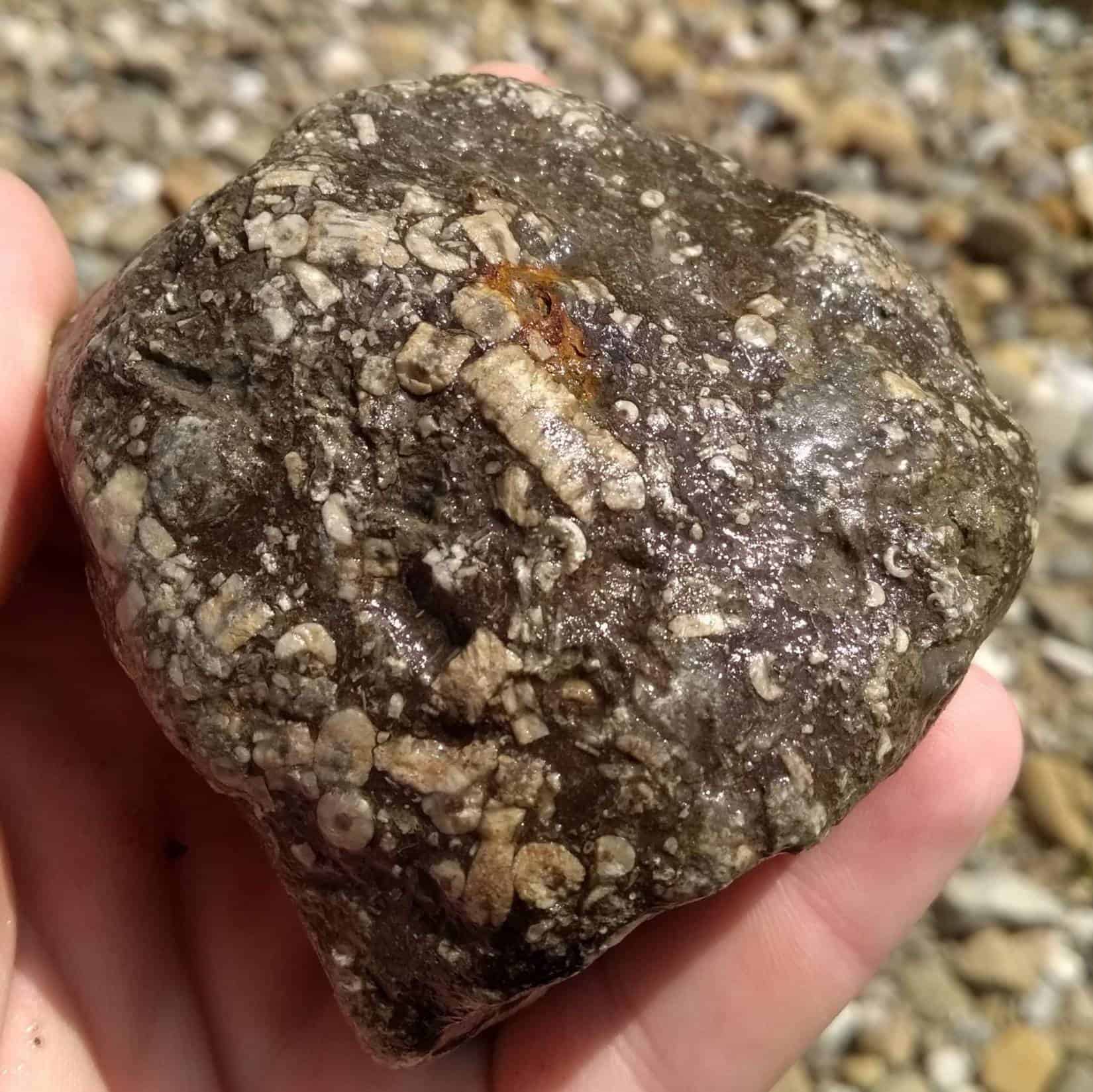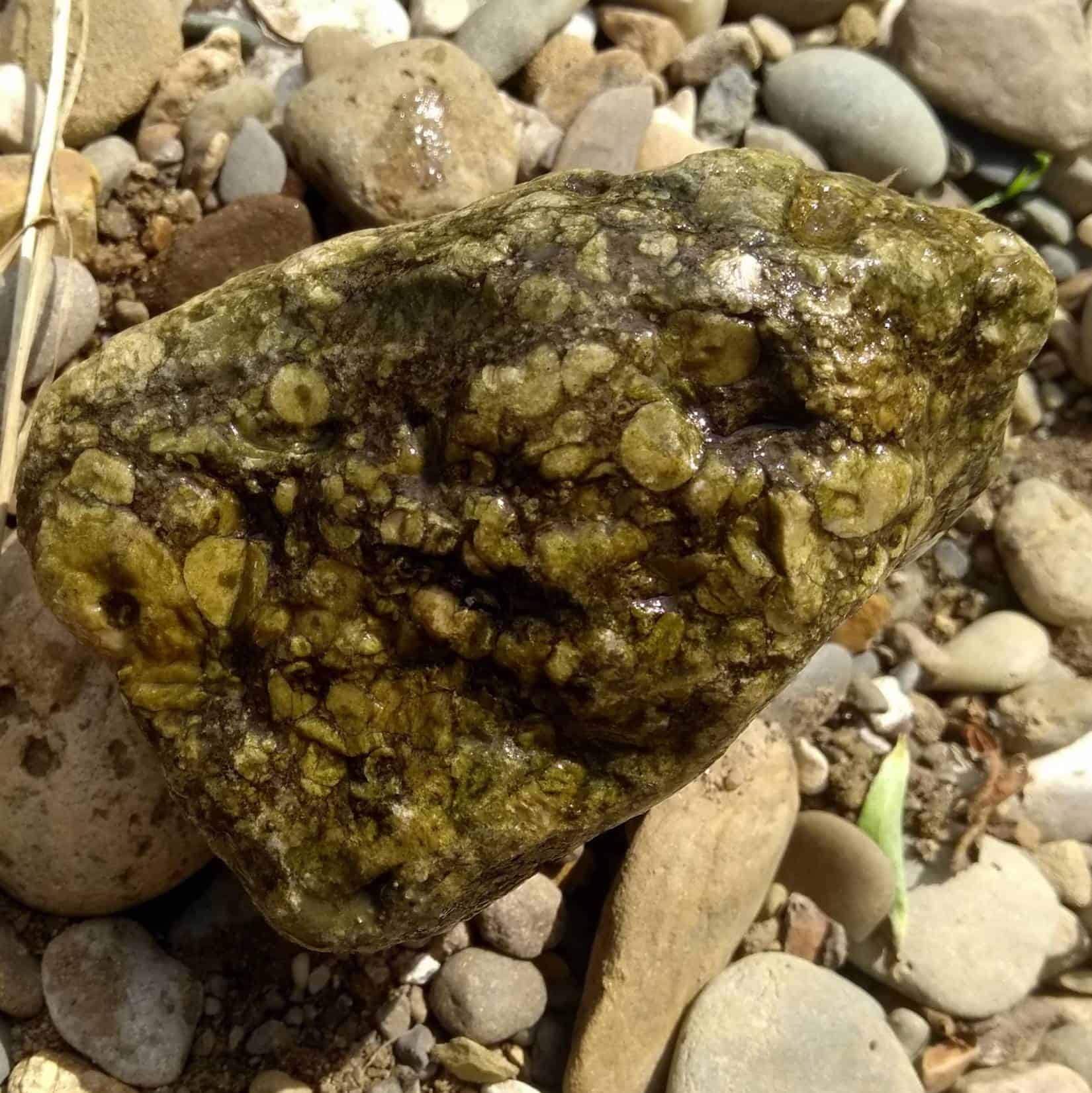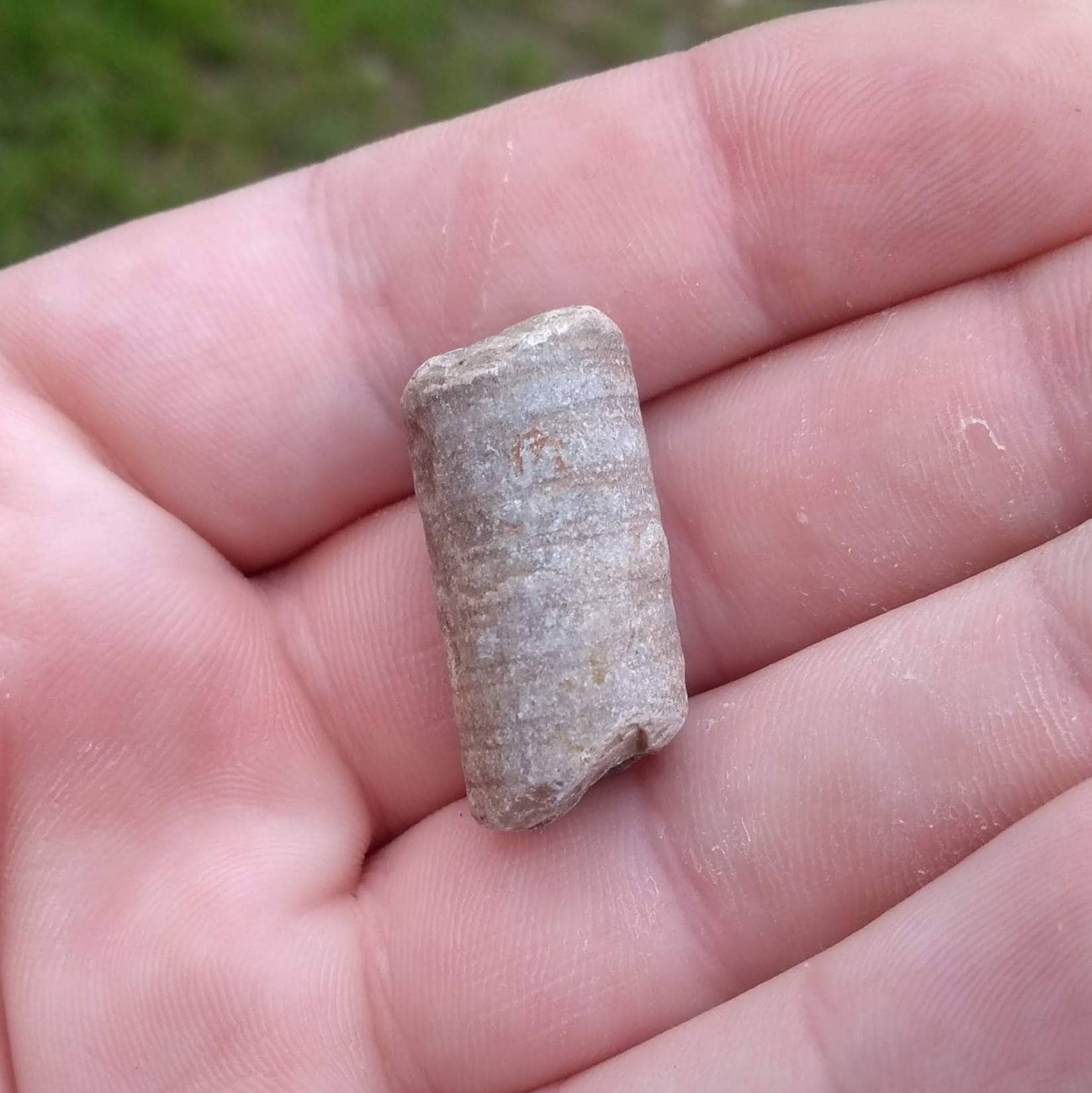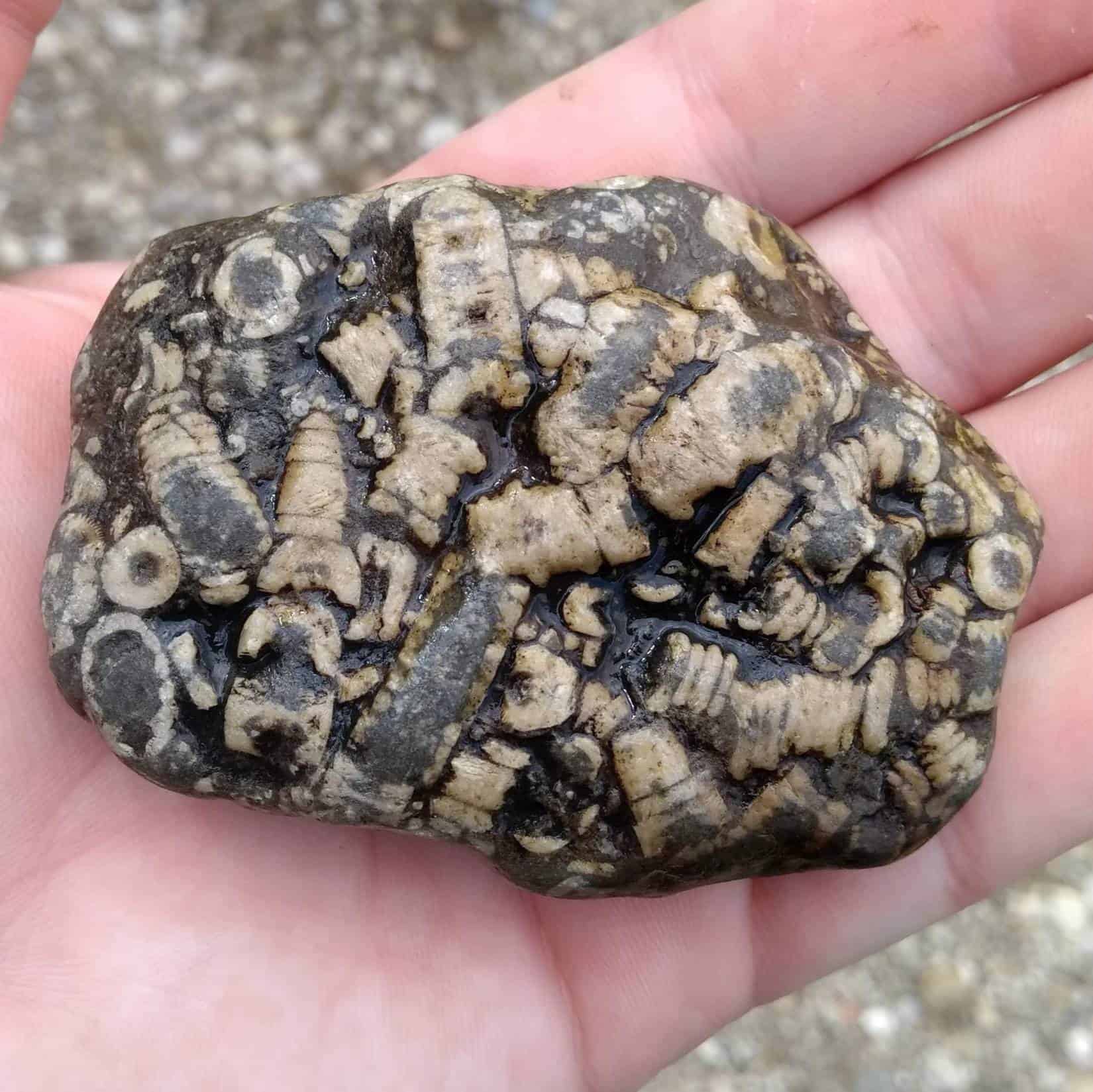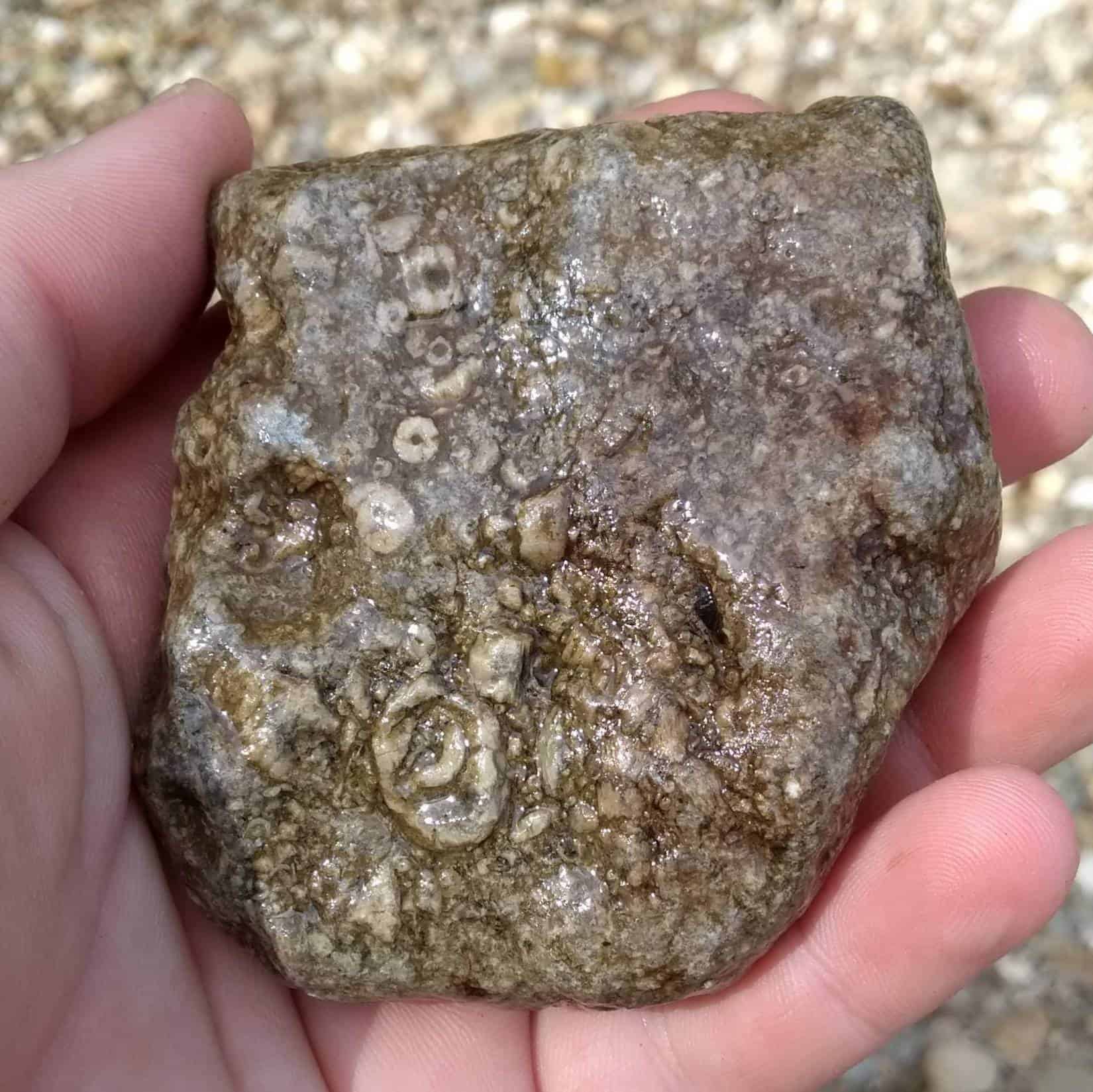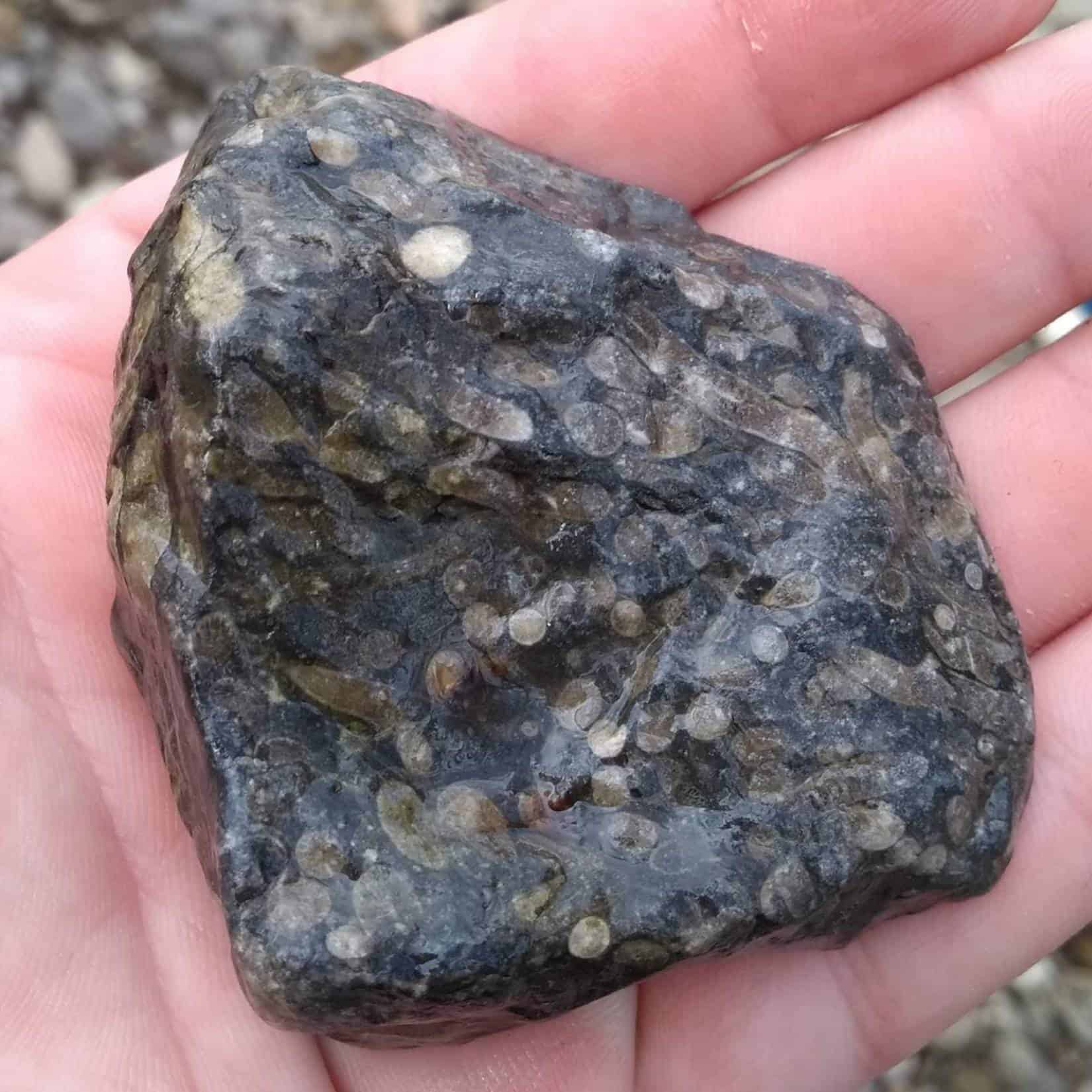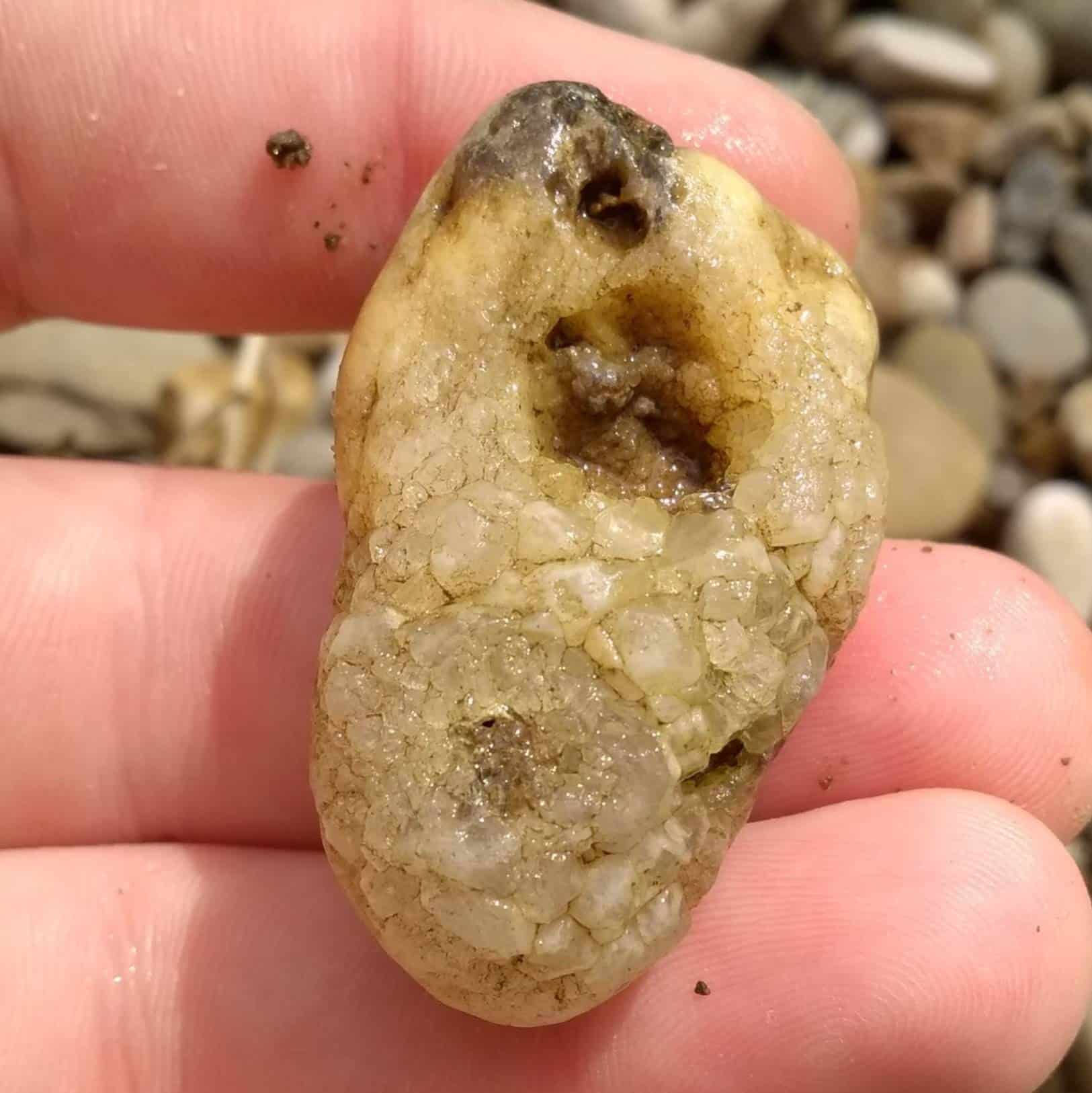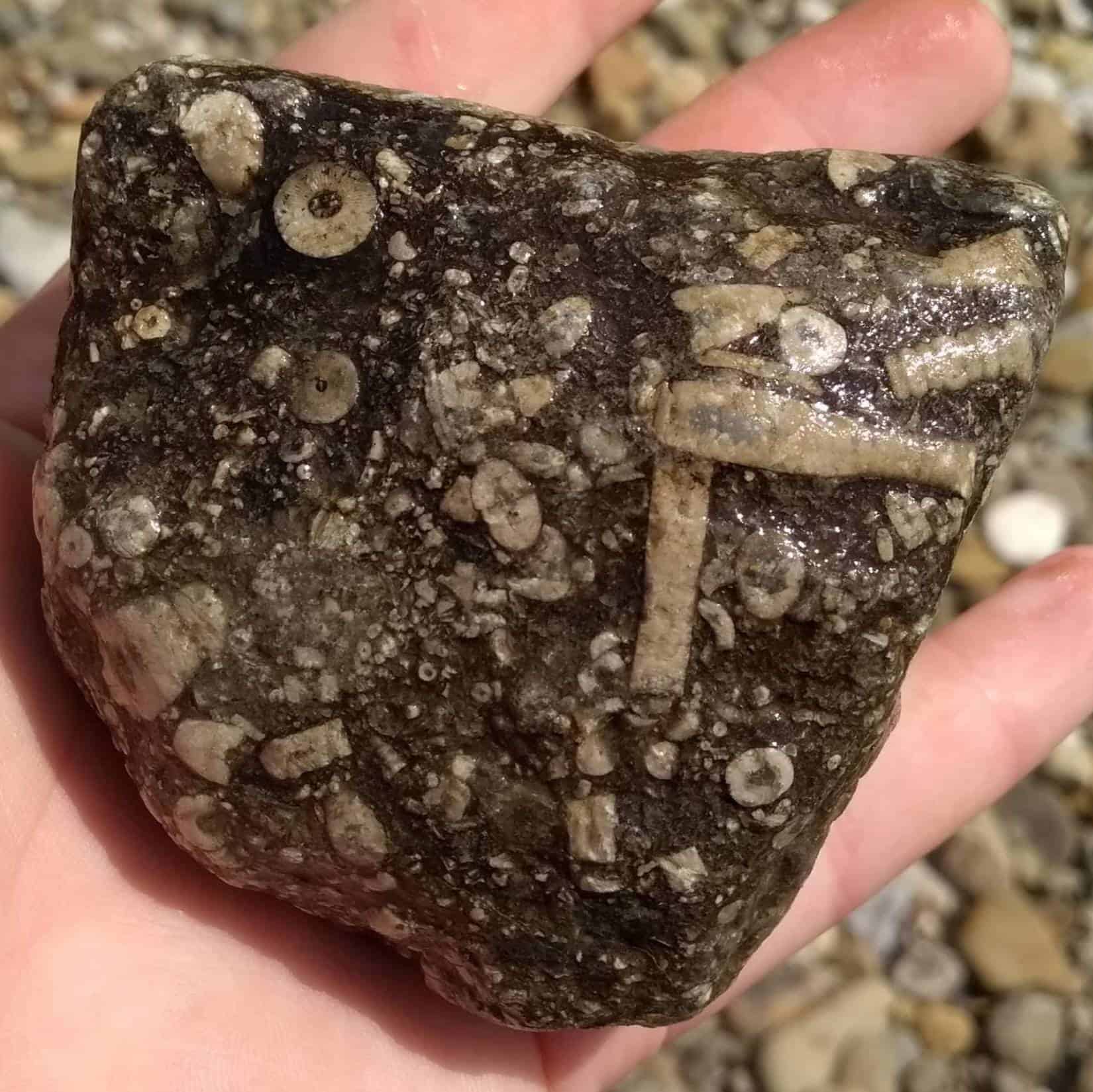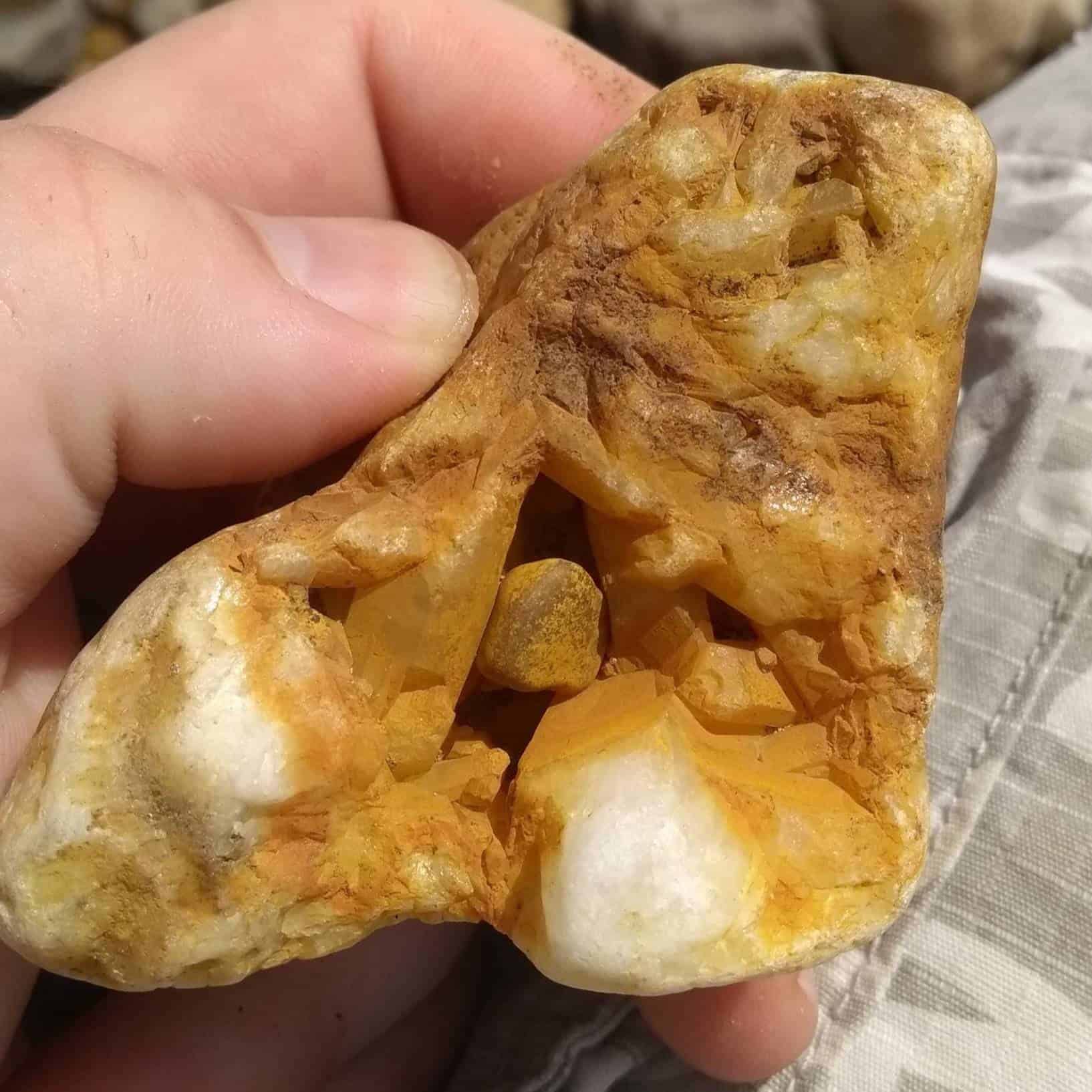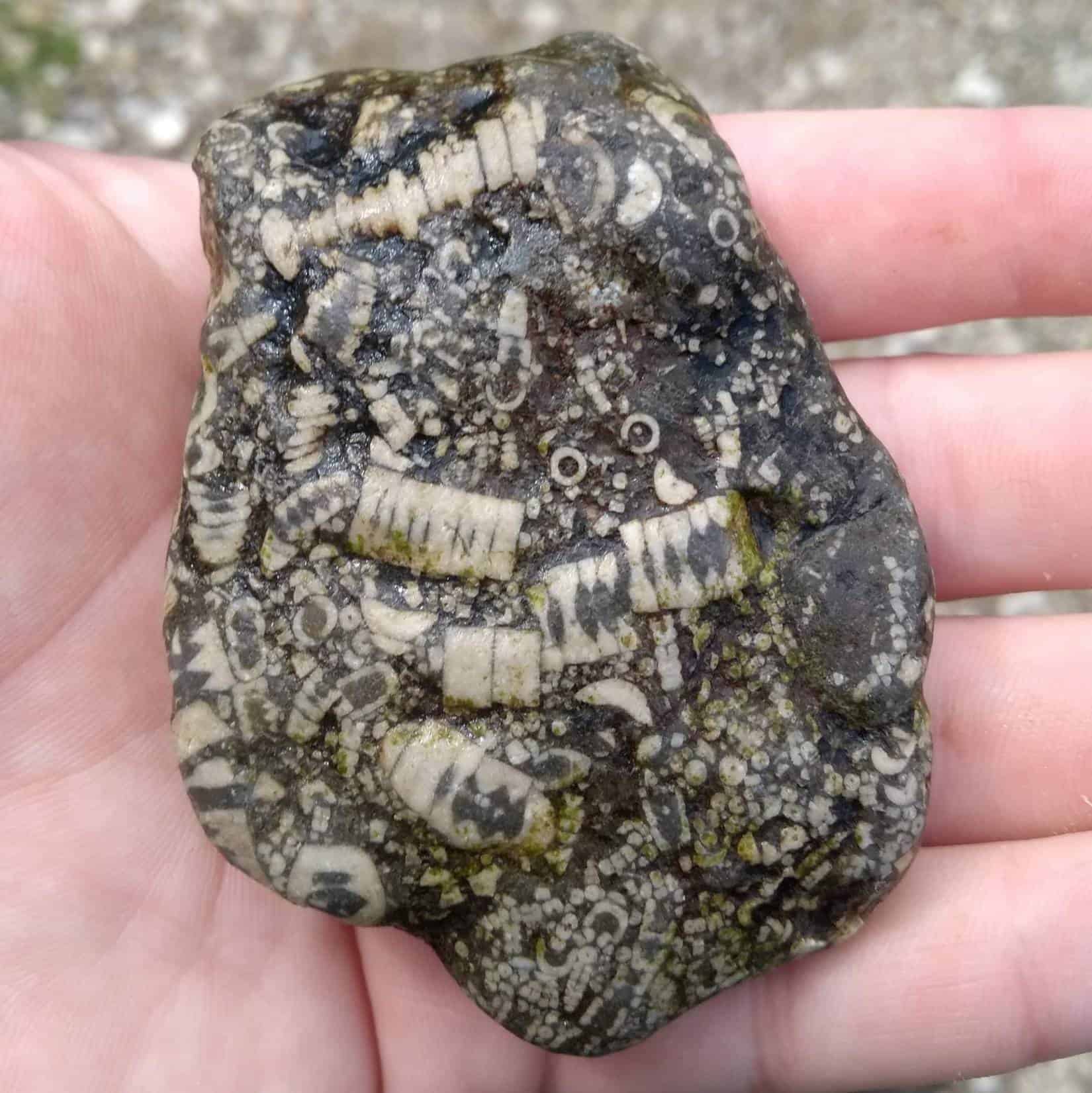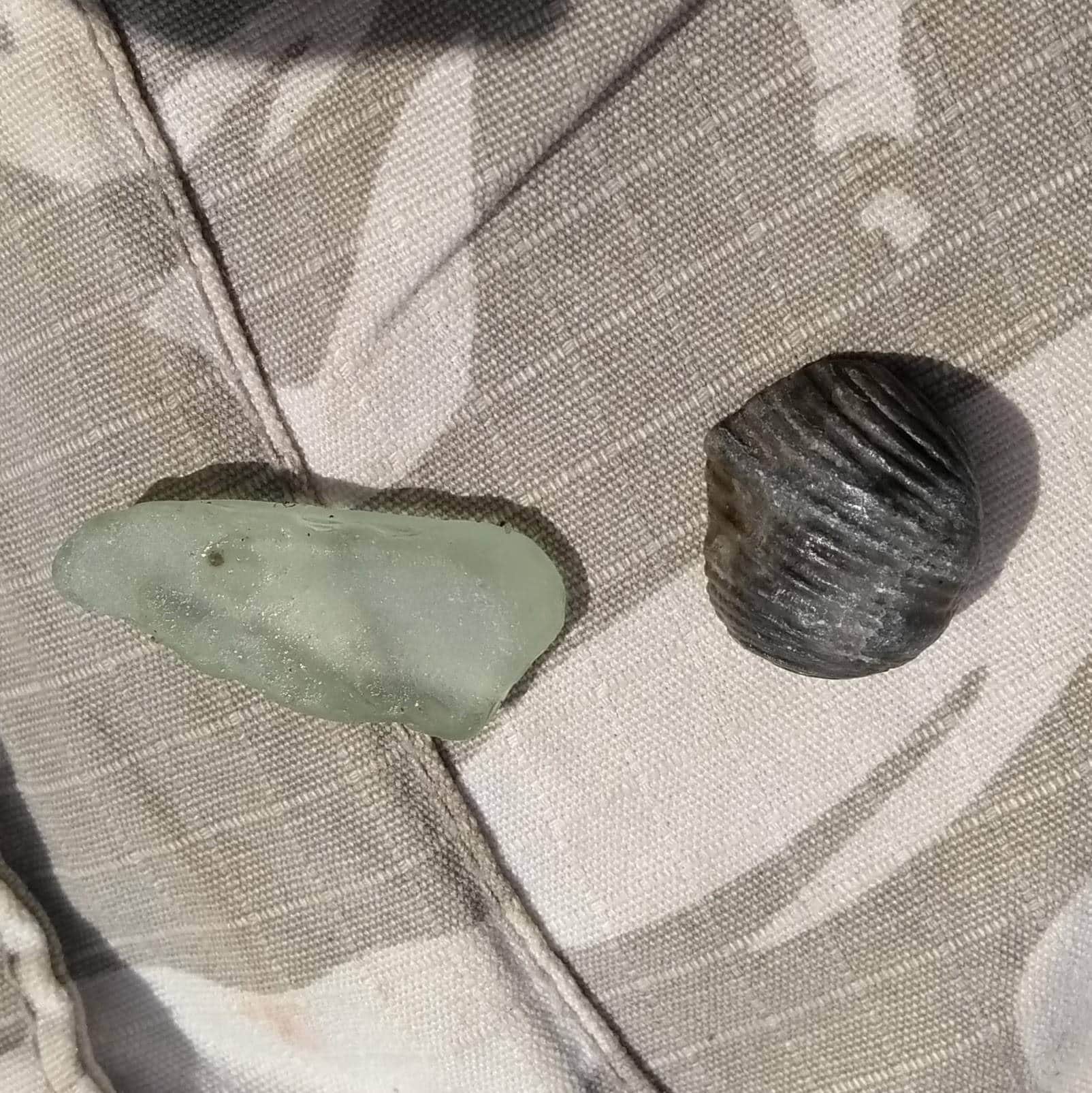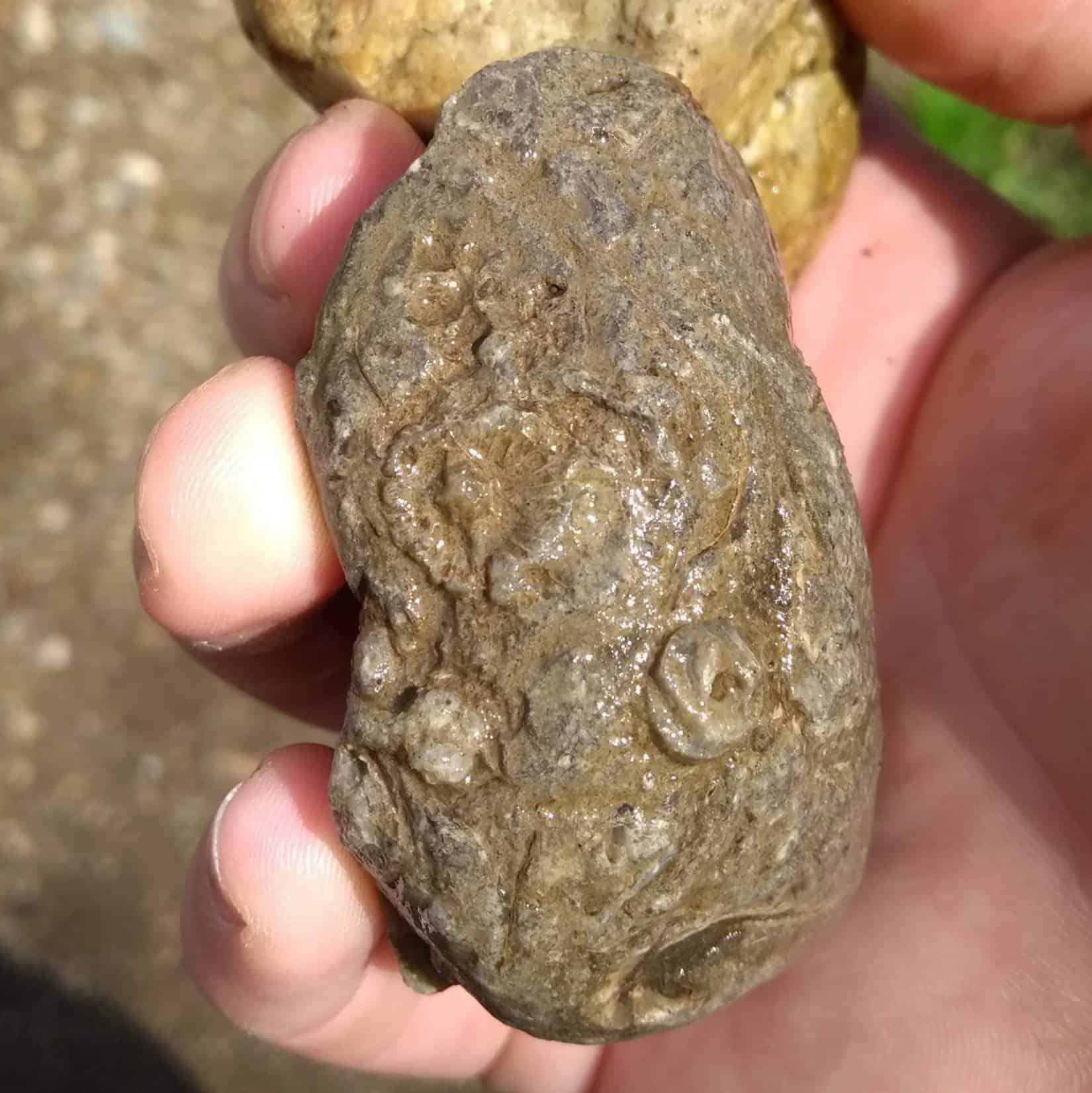You might be wondering why I would write an article about a collecting trip, and not actually tell you where. Have a look at the photos and read on to find out.
I managed to find some quality fossils, including brachiopods, bivalves, coral, and crinoids – however, I didn’t collect them, just photos.
This is almost a ‘meta’ article, as it involves no actual fossil or mineral collecting. This riverbed was on a National Trust property in North Wales – collecting is not allowed, and to post the location online would only encourage collecting. I took photos and left the pieces behind.
I visited in passing and ended up taking these photos, as examples of the types of things that can sometimes be found in streams and riverbeds across the UK.
Throughout the years, whenever paths, sidings, riverbanks etc have eroded and been repaired, or new ones have been built, cheap solutions will have been looked for.
This means that the landowner or contractors will typically go for the cheapest sources of hardcore material, sometimes called mill waste. In modern times, this is often crushed concrete and tarmac.
In the past, stone from various mines across the country may have been used, along with glass, bottles, slag glass, scrap metals, bricks, scrap stone, metal smelting debris – any relatively solid scrap material.
In many rivers in the UK you can find evidence of this in certain areas – Edwardian or Victorian era buildups of material not found naturally in the surrounding area.
In this case, I found a surprising amount of quality fossils, including several very nice corals, some good crinoids, and a smattering of bivalves and brachiopods.
I also found quite a lot of pottery, including some medieval pieces, as well as some Quartz clusters and a few individual Quartz points.
These were all found without even getting my feet wet – all of these pieces were on a gravel sandbank or within 20cm of the bank.
If you read this post and decide to go have a look through the rocks along your local river, please consider the following:
- All land is owned by someone – is access, fossil hunting, or any form of collecting allowed?
- Your own safety! This was more of a stream than a river, but there was still quite a lot of broken glass (which I did actually remove – sorry NT!)
- Not all areas are equal. You may live in an area with abundant access to a ‘boring’ type of stone, of no interest to collectors.
- Anything historically interesting should be reported to the landowner, the Portable Antiquities Service and your local Finds Liason Officer at the council.
- Could removing anything cause any damage to the environment or ecosystem?
In short – if you fancy fossil hunting, or digging through rocks and Victorian dump sites, please be responsible!
Interested in fossil collecting but have nowhere to go? We do sell a good range of value for money fossils, from the UK and abroad.


